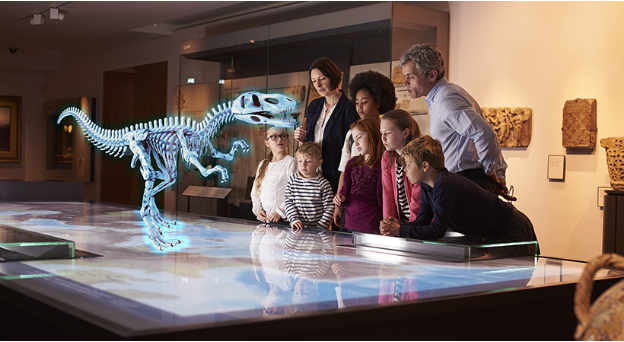A Travel Company’s Guide to Marketing
Angela Hassassian
May 23, 2019 - 8 min read

Here at 360 Stories, we have tried to tackle the question of marketing for the travel industry from a couple of different angles. If anything is true about marketing in general, it’s that nothing is straightforward. We try our best to boil the sphere down so that our readers can take away the essential core to get them started on their marketing journey. In the past, we have taken a general look at what travel industry professionals should focus on when starting their marketing journey when targeting Millennial travelers. We’ve also discussed more specifically how hotels, in particular, can use Virtual Reality technology to their marketing advantage. This time we want to take a step back and look at the bigger picture. There are some overarching concepts which can apply to all aspects of marketing for the travel industry. Consider this a travel company’s guide to marketing, going back to the basics.
First, let’s consider the challenges. Travel marketing is a rough game. You have to reckon with a large competition and low ROI to boot. Making yourself visible might be the biggest challenge you have to face, but all the traditional methods of marketing are a.) difficult to measure for effectiveness and b.) costly. To add to these complexities, there is a shift from the perspective of consumers and how they interact with brands. Gone are the days where advertisers would talk AT consumers. Now, the focus is shifted to speaking with consumers, providing useful content that holds a certain amount of value. Consumers crave information and entertainment and if you want to build a relationship with them, you should learn when it is appropriate to provide which, and where.
Know Your Audience, Be Your Audience
It’s not enough to simply target your audience with various forms of advertisement, you should be able to know them so well that you can step into their shoes. This means understanding every minute detail, and most importantly, listening to them. Do you know your their habits? What about their interests? Their concerns? You need to be open to understanding where they are coming from, what they are struggling with and what kind of questions they are asking. What is the kind of information that they are looking for, that you could potentially give them? Understanding all of this will help you to drive your content so that it goes beyond demographics and statistics.
Especially as a travel company, you need to be aware of what goes through your customer’s minds when they are researching, planning and booking trips. Are you aware of their motivations for traveling? Do you know what challenges they face at every step of the way? Do you know what resources they turn to when trying to find information? For example, it may surprise you to know that according to Bing, the biggest “vacation ideas” search trends include all-inclusive resorts, family-friendly vacations, and cheap vacations. Taking this information into account, assume for a moment that you are trying to sell family vacations at a resort. Well, a little bit of research will reveal that women conduct 68% of “family vacation ideas” searches and account for 69% of clicks. Moreover, women account for 59% of all travel-related searches and 80% of all travel decisions are made by women.
This is the kind of information that is key for targeting your content in such a way that it provides the consumers with exactly the kind of information they are looking for. This is what makes you more memorable not only for your usefulness, but it also establishes you in their minds as an authority on reliable travel-related information. Every message that you convey should be tailored to your target, in this example, to people who are in need for affordable deals, want an all-inclusive resort that is family friendly and perhaps includes outdoor activity options. Micro-moments need to be capitalized upon. The moments when consumers turn on their phone or computer to watch, discover, research or buy something. These are the moments where decisions are made, so you want to be there to help form those decisions in a way that they are favorable for you.
Knowing your audience on a more detailed level is also a key part in your marketing strategy because experience shows that consumers value a personalized approach. For example, in the case of a return customer, some kind of loyalty program could be offered. A website might keep track of browsing history and geographic location. The user can be provided with a seamless experience where their preferences are remembered.
Customize Your Content
The first step sets you up to concentrate on this very important step. Customizing your content in every way possible to fit the demands of your consumers. Remember, you can kiss those boasting days goodbye. While it certainly might be tempting to shout from the rooftops that “I am the best” be aware that this kind of self-promotion isn’t taken too kindly among consumers. As award-winning brand storyteller, David Beebe aptly put it, “Content marketing is like a first date. If all you do is talk about yourself, there won’t be a second date.” So where do you start?
You start from understanding the journey taken by your consumer base. For example, according to Expedia, travelers visit on average 38 different sites before booking. Your mission is to think about all the key pieces of information your consumer needs at each step of their research phase.
Phase One: Inspiration
At this point, your customer is likely just playing with the idea of traveling. As such, they are far more open-minded and willing to explore. This means that you should be providing the kind of easy-to-share and inspiring content that is easy to digest and doesn’t really put the emphasis on your brand just yet. This is the kind of content you want to be shared across social media and includes visually appealing content like videos and photos.
Phase Two: Research
Now your customer is starting to seriously think about taking that trip. They are craving destination-specific content. According to Google Insights, 51% of travelers are searching destination-related terms when first starting to plan, 49% are searching activity-related terms when they’re considering multiple possibilities and another 49% are searching price-related terms when they’re considering multiple possibilities. They want the basic information covered so that they can start forming a plan of what they want out of their travel experience. At this point, you can start introducing your brand a little bit, but be careful not to be too pushy when it comes to bookings.
Phase Three: Booking
Now it’s time to really make your brand stand out. Share information about yourself showing how you are set apart from the competition. Emphasize how your brand is the perfect fit for your consumer. Make use of the resources at your disposal including reviews, testimonies, influencers etc. to really run your story home.
Here are a few inspirational ideas of general topics you can create content around to get your marketing strategy started.
-
Destination guides
-
Travel tips and essential information
-
Recommended destinations or trips
-
Attraction or event highlights
-
Holidays and festivals highlights
-
Reviews of both destinations and travel services
-
Travel stories from other customers
-
Polls and quizzes
Of course, you want to use all the mediums at your disposal but remember that some content is consumed better than others. For example, it’s become fairly common knowledge that videos trump text (according to Hubspot, in cases where both video and text are available on the same page, 72% of people would rather use video to learn about a product or service), and an immersive experience that you can get from VR leaves the longest lasting impression yet!
These are two key concepts to help you on your way to building your marketing strategy as a Travel Company. Of course, this is only the beginning and barely scratches the surface of things to consider when developing an effective marketing strategy. Be sure to follow our blog to stay updated on more useful marketing strategies, aimed specifically towards travel industry professionals.


